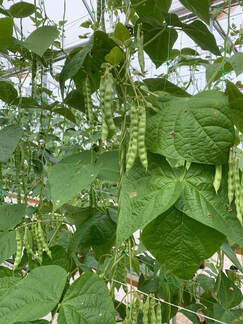Thank you Mike!
Well, I can't really get to that rock right now as it is under a pile of scrap lumber left over from a garden project that needs to be relocated soon. : )
But today after I posted, we had our first snow, and no sun, so I took a walk around the yard and the neighboring farm to look at other rocks that are either on the surface or just under, and the snow was melted above them (like one would see over a septic tank) even one that I know of down the lane that is 4 inches under the soil. Of course, one's sees this all the time in the city with asphalt and concrete, but it doesn't necessarily intuitively transfer to your concept of isolated rock outcroppings out in the country. And all my previous farms did not have rocks in such close proximity to growing areas.
We don't have snow often, and I haven't been at this site long, so had never noticed this before. Pretty neat that nature gave me this demonstration just when I asked the question! I did notice that the smaller rocks, say 3 ft in diameter had negligible melting, but the very large ones (like the one I am considering) where completely melted.
For TN, two weeks of night time lows in the single digits has not happened in my lifetime before, so I guess it got me a little concerned about my plans to utilize the rock. Since the freak cold, we have had two warm days before this next cold snap, enough to warm the rocks again, I would presume. But I don't know if they got "really cold" during that spell or not.
I am thinking that if the coldframe is situated in the middle of this "rock island" I might gain more heat than I previously thought, and maybe in the summer I could somehow harness the solar heat build up for some sort dark enclosed herb drying cabinet.
Anyway, thanks again, and I will take your advice of sticking the soil thermometer in both on the rock and beside the rock and then again for the next week as we are supposed to have some crazy cold again this coming week, good time for experimentation, bad time for plants used to zone 7.





